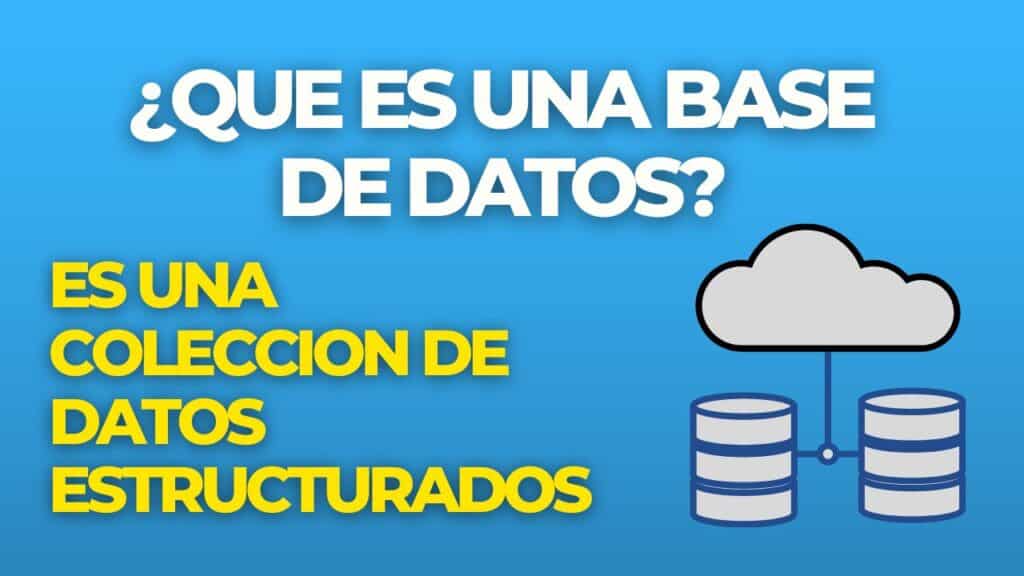What is a database?

Una base de datos es solo una colección de structured data. Pero no se trata de una recopilación de datos cualquiera. Es una colección de datos que se ha organizado de una manera que facilita la recuperación de datos. Si tuviera que almacenar todos los nombres, direcciones y números de teléfono de sus amigos en una caja de zapatos, aún tendría una base de datos. Pero sería bastante difícil encontrar el número de teléfono de alguien.
Por eso utilizamos software de gestión de bases de datos. Actúa como un intermediario que organiza los datos y nos ayuda a recuperarlos.
El software de gestión de bases de datos existe desde la década de 1960. Se ha utilizado en la industria bancaria durante décadas. También se utiliza en otras industrias como los seguros y la asistencia sanitaria.
Pero el software de administración de bases de datos no es solo para grandes empresas. También lo utilizan pequeñas empresas y particulares. Puede configurar una base de datos para almacenar información de contacto, información financiera y prácticamente cualquier otro tipo de datos.
How does a database work?
A database has three main parts:
Datos: esta es la información que desea almacenar en su base de datos. Puede agregar una cantidad ilimitada de información.
Esta es la información que desea almacenar en su base de datos. Puede agregar una cantidad ilimitada de información. Tablas: las tablas son como carpetas. Mantienen sus datos organizados. Puede agregar tantas tablas como desee.
Las tablas son como carpetas. Mantienen sus datos organizados. Puede agregar tantas tablas como desee a su Campos: los campos son las columnas de una tabla. Por ejemplo, una tabla puede tener un campo para el nombre de una persona y un campo para la dirección de una persona.
Todos están conectados por una serie de relaciones.
Relaciones: estas son las líneas que conectan las tablas. Muestran cómo se relacionan las tablas entre sí. Por ejemplo, una relación puede mostrar que la dirección de una persona está relacionada con su nombre.
Además de estas tres partes, y tiene un esquema. El esquema define todo, desde las tablas hasta los campos. Alguien que crea una base de datos suele escribir un esquema.
A continuación, se muestra un ejemplo de esquema.
Schema: structure that defines the structure of a database.
How is a database used?
Once you have set up a database, you can use it in different ways.
Primero, puede agregarle datos. Agrega datos a una tabla Por ejemplo, si desea agregar el nombre y la dirección de una persona a una base de datos, debe agregar la información a una tabla.
En segundo lugar, puede recuperar datos, Esto se puede hacer de varias maneras. Por ejemplo, puede utilizar la función de búsqueda de tablas para buscar datos específicos. O puede utilizar la función de autocompletar para acelerar su búsqueda. Ambas características se muestran en la siguiente imagen.
También puede recuperar datos mediante una consulta. Una consulta es una solicitud para recuperar datos. Hay dos tipos principales de consultas:
- Consultas de selección: las consultas de selección se utilizan para recuperar todos los datos de una tabla. También se pueden utilizar para recuperar solo algunos de los datos de una tabla.
- Las consultas seleccionadas se utilizan para recuperar todos los datos de una tabla. También se pueden utilizar para recuperar solo algunos de los datos de una tabla.
- Consultas de actualización: las consultas de actualización se utilizan para realizar cambios en los datos de una tabla. Se pueden usar para agregar o eliminar datos.
Por ejemplo, suponga que desea encontrar el costo total de sus compras de Amazon en el último mes. Puede hacer esto ingresando los datos en una tabla. Luego, puede usar una consulta para sumar el costo total de las Amazon shopping. Esa consulta se vería así:
SELECCIONE SUM (s.amount) FROM Amazon.shopping_cart AS s WHERE s.date> date ("ahora", "- 30 días") Y s.date <date ("ahora", "-10 días")
En tercer lugar, puede exportar los datos a un archivo. Esto es útil si desea guardar los datos para usarlos en otra aplicación o si desea usar los datos en otra.
Data migration
La migración es el proceso de mover datos de una base de datos a otra. Es útil si desea utilizar los datos en otra base de datos. Por ejemplo, es posible que desee utilizar en una base de en su computadora. Pero es posible que también desee utilizar los datos en una base de datos en su teléfono.
You can also read: How to Optimize Your WordPress Site's Database

Write us a comment: